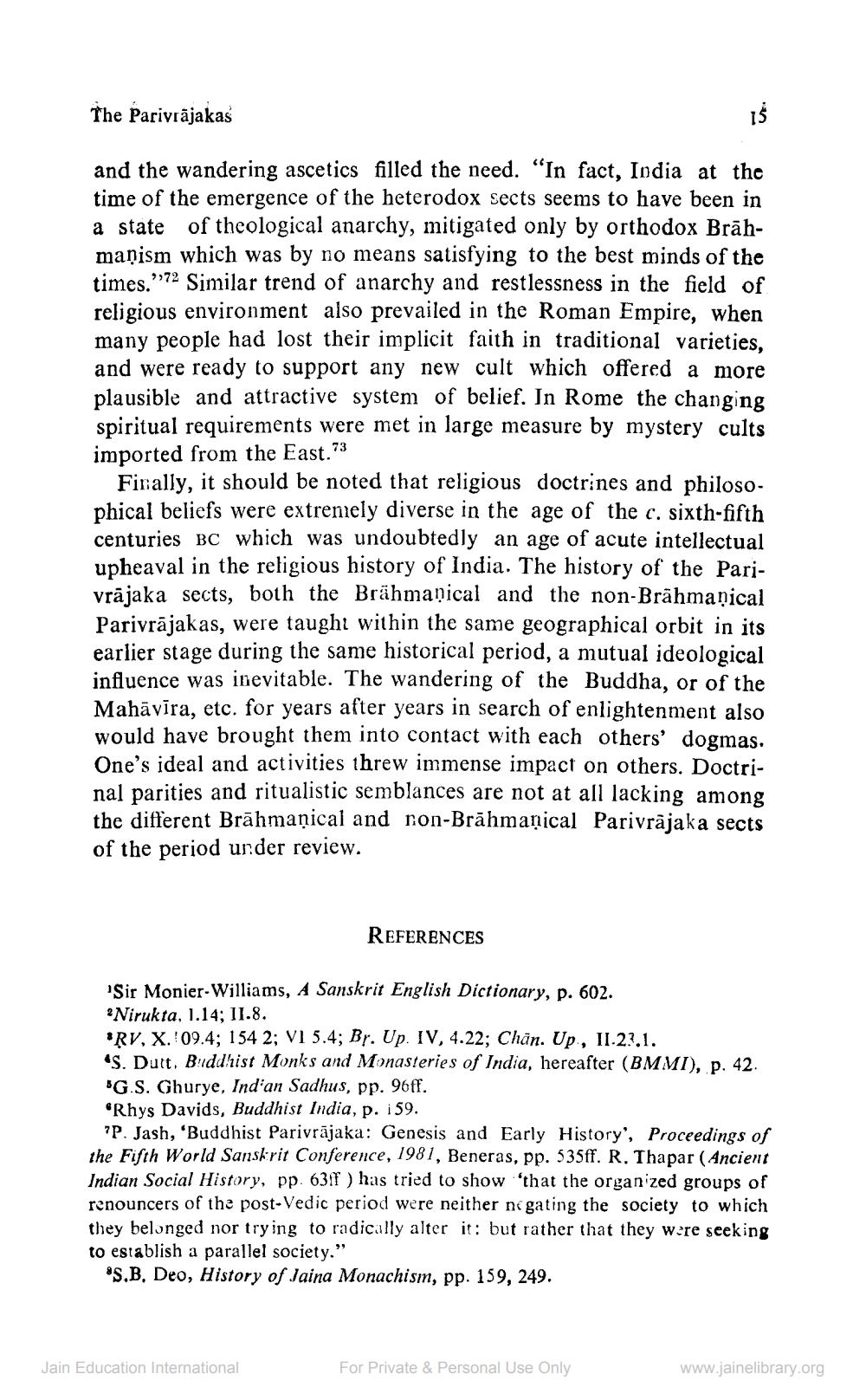________________
The Parivrajakaś
and the wandering ascetics filled the need. "In fact, India at the time of the emergence of the heterodox sects seems to have been in a state of theological anarchy, mitigated only by orthodox Brāhmanism which was by no means satisfying to the best minds of the times."72 Similar trend of anarchy and restlessness in the field of religious environment also prevailed in the Roman Empire, when many people had lost their implicit faith in traditional varieties, and were ready to support any new cult which offered a more plausible and attractive system of belief. In Rome the changing spiritual requirements were met in large measure by mystery cults imported from the East.73
Finally, it should be noted that religious doctrines and philosophical beliefs were extremely diverse in the age of the c. sixth-fifth centuries BC which was undoubtedly an age of acute intellectual upheaval in the religious history of India. The history of the Parivrājaka sects, both the Brahmaṇical and the non-Brāhmaṇical Parivrājakas, were taught within the same geographical orbit in its earlier stage during the same historical period, a mutual ideological influence was inevitable. The wandering of the Buddha, or of the Mahāvīra, etc. for years after years in search of enlightenment also would have brought them into contact with each others' dogmas. One's ideal and activities threw immense impact on others. Doctrinal parities and ritualistic semblances are not at all lacking among the different Brāhmaṇical and non-Brāhmaṇical Parivrajaka sects of the period under review.
REFERENCES
'Sir Monier-Williams, A Sanskrit English Dictionary, p. 602. Nirukta, 1.14; II.8.
RV, X.109.4; 154 2; V1 5.4; Br. Up. IV, 4.22; Chan. Up, II.23.1.
'S. Dutt, Buddhist Monks and Monasteries of India, hereafter (BMMI), p. 42. G.S. Ghurye, Indian Sadhus, pp. 96ff.
Rhys Davids, Buddhist India, p. 159.
"P. Jash, 'Buddhist Parivrajaka: Genesis and Early History', Proceedings of the Fifth World Sanskrit Conference, 1981, Beneras, pp. 535ff. R. Thapar (Ancient Indian Social History, pp. 63f) has tried to show 'that the organized groups of renouncers of the post-Vedic period were neither negating the society to which they belonged nor trying to radically alter it: but rather that they were seeking to establish a parallel society."
'S.B. Deo, History of Jaina Monachism, pp. 159, 249.
Jain Education International
For Private & Personal Use Only
www.jainelibrary.org




